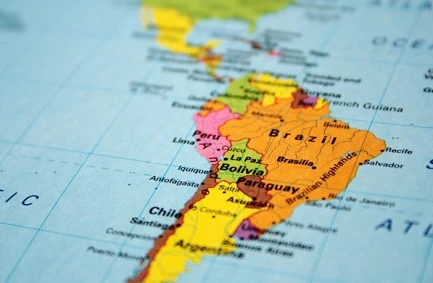There is not only the negative case of Brazil in South America: other countries are distinguishing themselves for their anti-contagion policies
Latin America has become the new center of the global coronavirus pandemic, but two small countries, Uruguay and Paraguay, have opposed to the regional trend and can boast an almost total victory against the virus, writes The Guardian. While they are strangely different – Uruguay is a progressive enclave with Latin America’s lowest poverty rate, while Paraguay has poverty estimates of 30-50% and corruption is endemic – both nations have maintained their surprisingly low coronavirus death rates.
There have been only 13 deaths in Paraguay and only 25 in Uruguay so far, despite the porous land borders both countries share with Brazil, where the pandemic has claimed more than 50,000 deaths. Free from the endemic corruption and political struggles that have plagued most other Latin American nations in recent decades, Uruguay passed painlessly from 12 years of center-left administration to the center-right administration of its new president in March. , Luis Lacalle Pou, who maintained the social progress of the previous administration. Uruguayans may point to their long history of progressive social policies – including extensive public health coverage and nearly 100% access to running water – as a key factor in containing the virus.
Uruguay is now gradually reopening schools and malls, albeit with social distancing, face masks and mass testing. “The key to our success has been a quick response in detecting and isolating cases,” said Rafael Radi, one of the COVID-19 government chief advisors, Rafael Radi. The tests are so aggressive that Uruguay ranks fourth in the world after New Zealand, Australia and Thailand in the number of tests conducted for each new confirmed case.
Uruguay conducts 1,610 tests for each new case. By comparison, the US and UK only conduct 52 and 21 tests respectively.
Instead of just looking for contacts from confirmed cases, Uruguay sends special teams to test random city blocks and critical work sectors such as construction workers, carrying out more than 57,000 tests so far – about 1.6% of its population of 3.5 million inhabitants. With just 882 positive cases since the virus arrived on March 13, Uruguay’s success has earned it comparison with New Zealand, without the advantage of being an island surrounded by a vast ocean. Uruguay is sandwiched between the two largest nations in South America, Brazil and Argentina, where the numbers are soaring.
Its “red-hot” northern border with Brazil is of particular concern. “Brazil and the great sword of Damocles that hangs over our heads,” said Radi. The 1,000-kilometer border has towns and cities encamped right on it.
To the west, between Brazil, Argentina and Bolivia, is Paraguay which has achieved similar success in containing the pandemic. The landlocked country, with 7 million inhabitants, has so far recorded only 1,392 cases and 13 deaths. Dr Antonio Arbo, epidemiologist and former health minister, said the key to Paraguay’s success was punctuality, severe government measures, accompanied by good behavior by the majority of the population. “The closure of the borders, social distancing and an initial blockade were successful when we analyzed the data,” he said. The government of President Mario Abdo Benitez was one of the first in the region to implement containment measures after the second confirmed case of Covid-19 on March 10. It has now moved on to phase three of a four-phase reopening plan with the economy greatly reactivated. As in Uruguay, preventing the passage of the virus from Brazil has been a priority. Paraguay has militarized key sections of its notoriously porous border and has provided mandatory quarantine centers for the return of Paraguayans. More than half of Paraguay’s Covid-19 cases have been linked to returning citizens from Brazil.
Despite the enviable results achieved so far, criticism of Abdo Benitez’s administration is strong. Strong public outcry over multiple scandals involving the misuse of some of the funds intended to manage the crisis led to several high-profile resignations.
(Taken from the foreign press review of Eprcomunicazione)





















































